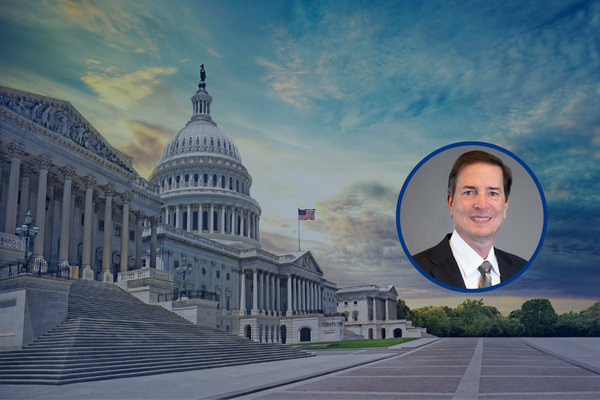
Rethinking Overdraft Fees with a Balanced Approach
Categories:
Overdraft fees continue to be a hot topic, capturing the attention of regulators, consumers, and financial institutions (FIs) alike. With the CFPB’s latest overdraft proposal and competitive pressures from megabanks, many executives are reassessing their fee structures. Adjusting fees might seem straightforward, but it’s a complex decision requiring a careful look at both consumer needs and institutional goals.
Overdraft programs have been a non-interest income stream for years, yet the combination of regulatory pressures and increased competition is prompting many to reassess their fee strategies. Before making any changes, it’s critical to recognize that there’s no universal answer. A $300 million FI is not the same as a $3 billion FI—the impact of reducing overdraft fee amounts varies widely based on institution size, account holder base, and strategic goals. But should your FI reduce overdraft fees?
Do Consumers Value Overdraft Protection? Here’s What the Data Shows
Overdraft protection is, at its core, a safety net for account holders. Many consumers appreciate the option to cover critical payments, even if it comes at a cost. A 2024 survey by the American Bankers Association (ABA) highlights just how valuable this service remains for most consumers:
- 67% find overdraft protection valuable, while only 16% do not.
- 79% of consumers who incurred an overdraft fee in the past year were glad their bank covered their payment rather than returning or declining it.
- 64% see a fee as reasonable when it means essential payments, such as rent or mortgage, are covered and paid on time.
- 71% are relieved to avoid a late fee or other penalties, thanks to overdraft protection.
These findings suggest that reducing overdraft fees may not align with what all consumers expect if the service remains beneficial.
Leverage Education and Transparency as Competitive Advantages
Transparency builds trust, and trust builds loyalty—a cycle that FIs can leverage to foster lasting relationships. Today’s consumers expect transparency and guidance on managing their finances. Interestingly, consumers still rely on other sources to cover expenses.
- 12 million Americans use payday loans every year.
- 30 million turn to pawn shops annually.
- More than one in three held more credit card debt than emergency savings in both 2023 and 2024.
This presents a tremendous opportunity for community FIs to foster trust by educating on options like overdraft services. According to a survey by MX, 39% of consumers feel their FI has a responsibility to educate them on financial literacy. Helping consumers understand their overdraft options can enhance loyalty and position your FI as a valued partner in their financial well-being.
Jennifer Simmons, VP of National Alliances at ADVANTAGE, emphasizes this need for transparency.
“Financial institutions can enhance the consumer experience by offering low-balance alerts, grace periods, and clearly communicating alternatives to overdraft fees. This proactive approach fosters trust and helps account holders manage their finances more effectively. Overdraft programs should be a safety net, not a penalty.”
Three Steps to Build Loyalty Through Clear Communication
Providing account holders with transparent information on overdraft options and alternatives demonstrates your commitment and support—it puts the protection back in overdraft protection. Here are three essential steps:
- Prioritize Clear Communication: Proactively inform account holders about their eligibility and how the program works—including their limit—so they fully understand their options and resources.
- Simplify Access to Disclosures: Make overdraft disclosures accessible and concise, both digitally and in person, to ensure account holders are informed and understand the benefits, as well as their responsibilities.
- Keep Information Current: Regularly review and update disclosures to reflect current policies, fees, and terms, ensuring alignment with both compliance and your institutional best practices.
Stay Ahead of Regulatory Compliance Trends
When considering fee adjustments, compliance with the latest best practices and regulatory standards is crucial. Recent shifts, such as guidance on Regulation E opt-in practices and increased scrutiny for how re-presentments and APSN transactions are handled, underscore the need to stay agile and informed.
ADVANTAGE’s team of overdraft experts can help determine if reducing your overdraft fee structure is warranted and ensure your program not only complies but exceeds regulatory expectations. Having a trusted partner can save valuable time, reduce risk, and support smoother, more effective operations.
For a deeper dive into common mistakes and how to avoid them, see our blog “Common Mistakes When Changing Overdraft Fees.”
Take a Strategic Next Step
Now is the time to act. By prioritizing transparency, aligning with regulatory changes, and meeting consumer expectations, your FI can stand out and thrive in today’s dynamic market.
Contact your local representative to learn more about offering a consumer-first overdraft privilege program.
About ADVANTAGE, powered by JMFA
ADVANTAGE empowers community banks and credit unions with strategic solutions to drive growth and success. Our comprehensive services include overdraft program compliance, account acquisition strategies, contract negotiation expertise, and technology strategy consulting. With 40-plus years of supporting community banks and credit unions nationwide, we’re dedicated to delivering exceptional results and fostering long-term partnerships. Choose ADVANTAGE to enhance performance, unlock new opportunities, and build lasting value.
Stay connected with our latest insights by subscribing—visit advantage-fi.com/newsletter.




